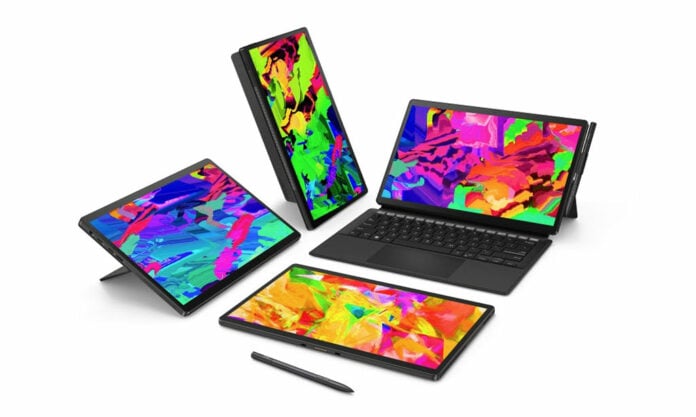At the Wow the World event, Asus claims this 785g 2-in-1 is the first with an OLED screen.
Asus has used its Wow the World special event to launch an attractive new member of its VivoBook family, the VivoBook 13 Slate OLED 2-in-1. The VivoBook line of laptops has traditionally been a fashionable mid-range series from Asus, sitting somewhere beneath the prosumer thin-and-light Zenbook designs, but a decent step-up from entry-level efforts. The inevitable trickle down of tech has now resulted in a new, more premium feature heading to VivoBooks – OLED screens.
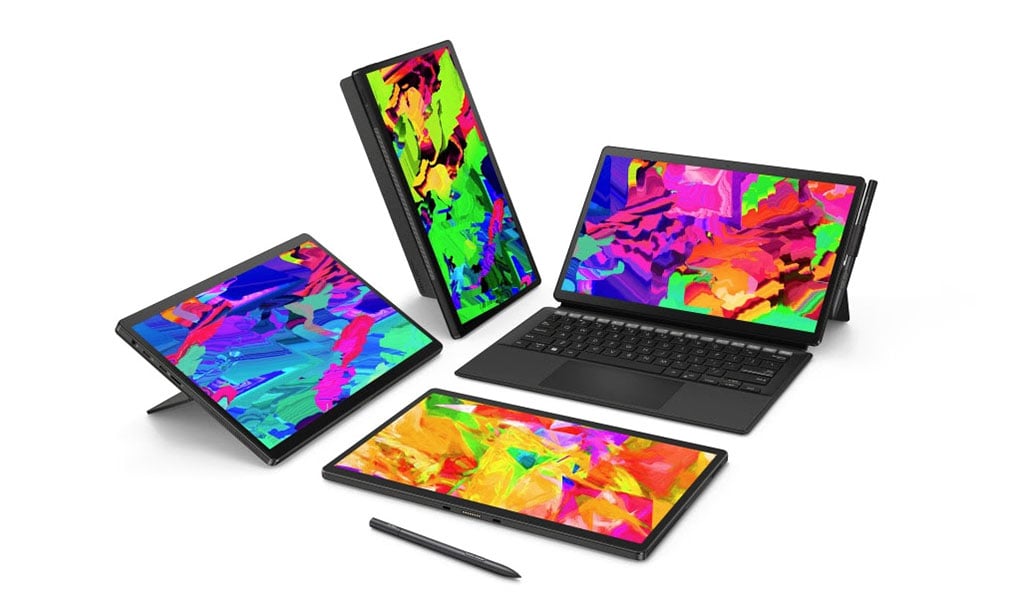
A major claim to fame with equipping this 2-in-1 with an OLED screen is the form factor. Moreover, the screen sounds rather tasty – it is 13.3in diagonal, with FHD (1920×1080) resolution, a 16:9 aspect ratio, and 550nits peak brightness, with 1.07 billion colours, 100 per cent DCI-P3 colour gamut, Pantone validation, with both TUV and SGS Eye Care certification and low blue light tech, touch screen input, and yet also boasts stylus support. Phew! Asus’ screen is surrounded by small-ish bezels with a screen-to-body ratio of 93 per cent.
On the topic of the stylus, Asus is including the Asus Pen 2.0 with Microsoft Pen Protocol (MPP) 2.0 technology – ultra-low latency and fast response – in the box (as well as a stylus holder and device sleeve). Boasting 4096-pressure levels, 5-350 gram pen-tip force, and 266Hz sampling rate, it should be a natural and responsive companion for your mark-up or sketching tasks. The Bluetooth-connected stylus charges by USB Type-C from your laptop or a powerbank, but you won’t have to do it often as it has 140 hours battery life. Four interchangeable nibs are provided in ‘2H, H, HB, B’ feels.
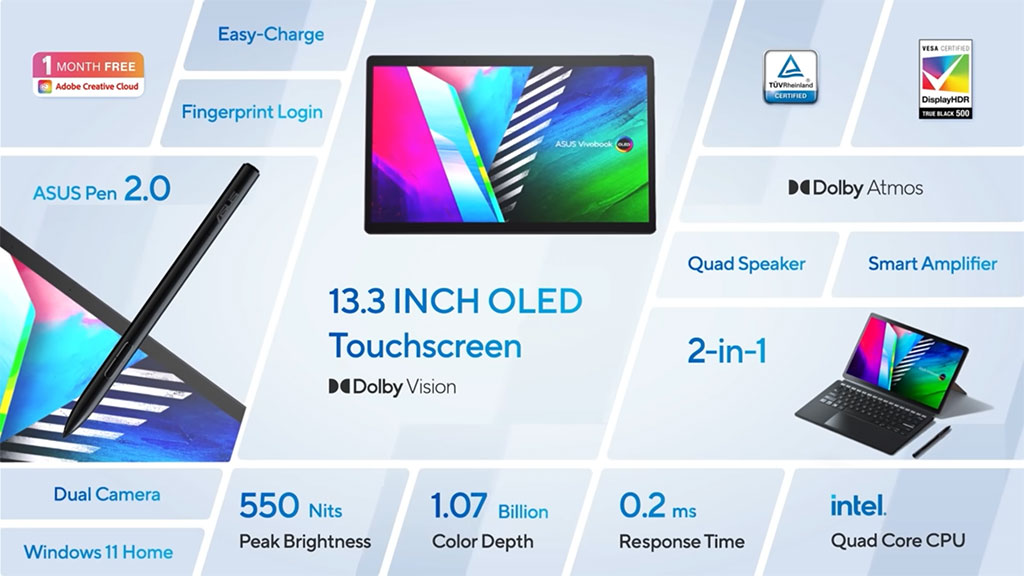
Asus has equipped the screen portion of the 2-in-1 with a ‘cover stand’ which can decline up to 170 degrees. If you are at a table or desk you may want to use the included detachable keyboard. Asus says this offers 1.4 mm key travel, 19.05mm full-size key pitch, and is accompanied by a large touchpad touting a 128 x 64mm area. No keyboard backlighting is mentioned.
Other specs (I will get to processor/RAM/storage later) that you should know are the provided 2x USB-C, 1x combo audio jack, 1x microSD card reader, dual camera system (13MP rear, 5MP front), power-button fingerprint login, 50Wh quickcharge battery, Wi-Fi 6 (802.11ax)+Bluetooth 5.2 (Dual band) 2*2, Dolby Atoms quad-speaker sound, built-in array mic, size of 30.99 x 19.00 x 0.82cm, and weight of 780g, plus Windows 11 Home/S OS.
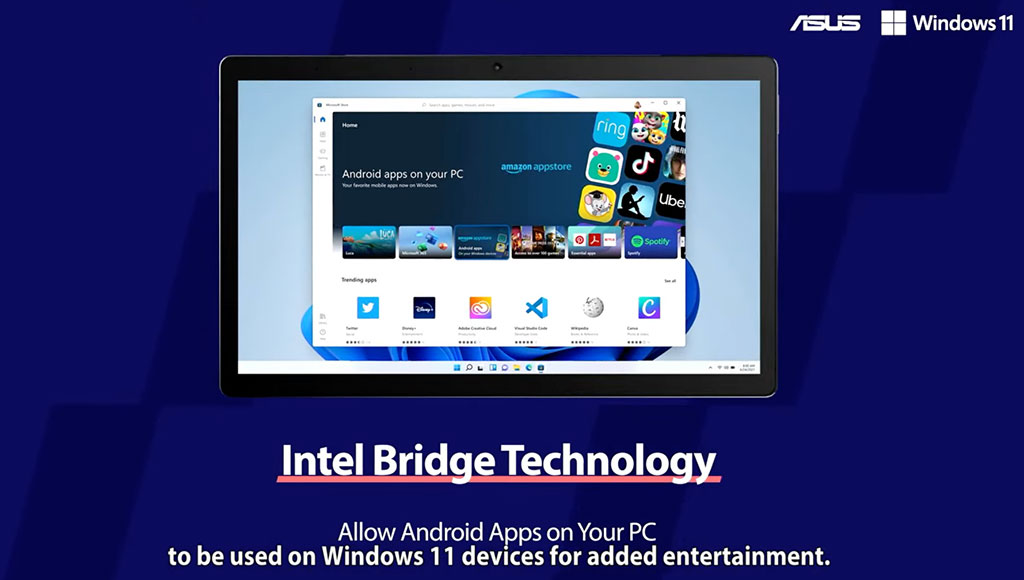
So far so good in comparison with the Microsoft Surface line. Yet the processor, RAM and storage choices make this much more of a Surface Go rather than Surface Pro competitor. Getting to the nitty-gritty, the only processor choice for Asus VivoBook 13 Slate OLED 2-in-1 buyers is the Intel Pentium Silver N6000 processor at 1.1GHz (6W, 4M cache, up to 3.3GHz, 4 cores, 4 threads). You can choose between the following anaemic specs to configure your Slate; 4GB or 8GB of LPDDR4X, and 128G eMMC or a 256GB M.2 NVMe PCIe 3.0 SSD.
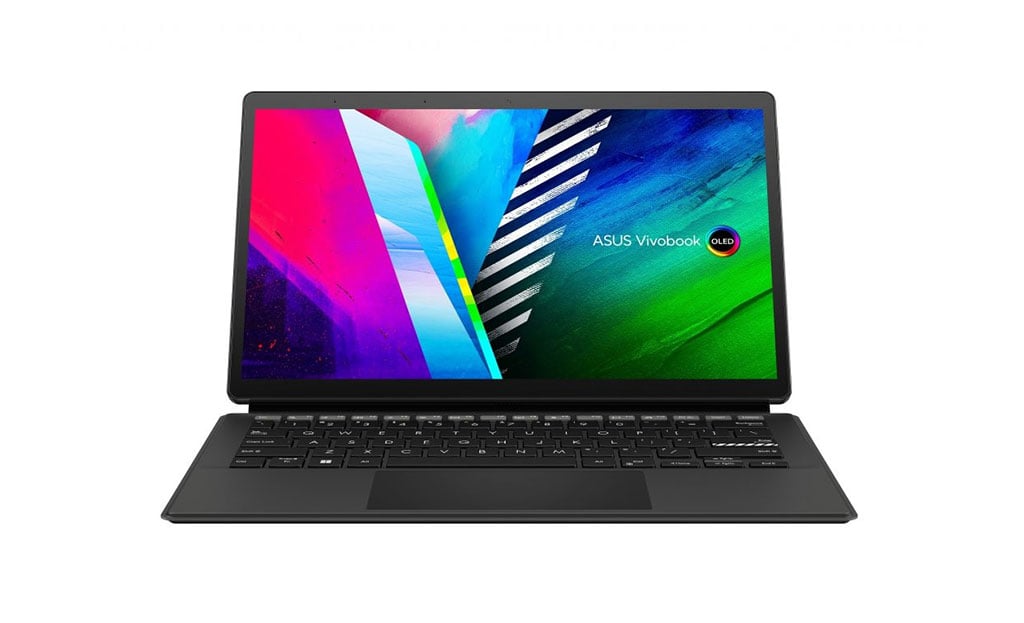
If you are interested in the Asus VivoBook 13 Slate OLED 2-in-1, it has a reasonable starting price of US$599, but for that you will be getting the very thin-end of the specs, with 4GB RAM and 128GB of slow eMMC storage. I don’t have the 8GB RAM/256GB PCIe SSD pricing for now. Availability is scheduled for early in 2022.

